Having a frog as a pet can be an enriching experience, offering a unique opportunity to observe and care for a fascinating creature. At PETS.EDU.VN, we understand the allure of these amphibians and are dedicated to providing you with the knowledge needed to ensure their well-being; exploring frog care, frog species, and the responsibilities of pet ownership. Discover if amphibian care is right for you, learn about the commitment, and find out how to create a thriving habitat for your future froggy friend.
1. Understanding Frogs as Pets
Frogs, belonging to the amphibian class, boast around 7,000 diverse species worldwide. These creatures typically start their lives in water, later developing legs and lungs to adapt to land. A key characteristic is their permeable skin, which allows them to absorb water and air, necessitating a humid environment. Choosing a frog as a pet means understanding these unique biological needs.
1.1. Frogs vs Toads: What’s the Difference?
It’s common to use the terms “frog” and “toad” interchangeably, but they are distinct. Toads are a type of frog, but not all frogs are toads. Frogs generally have smooth, moist skin and longer legs, living predominantly in or near water. Toads, however, have drier, bumpy skin and shorter legs, allowing them to thrive on land. Understanding these differences helps in selecting the right species for your lifestyle and providing appropriate care.
| Feature | Frog | Toad |
|---|---|---|
| Skin | Smooth, moist | Dry, bumpy |
| Legs | Long, adapted for jumping and swimming | Short, adapted for hopping on land |
| Habitat | Primarily aquatic or near water | Primarily terrestrial |
| Water Dependence | High | Lower |
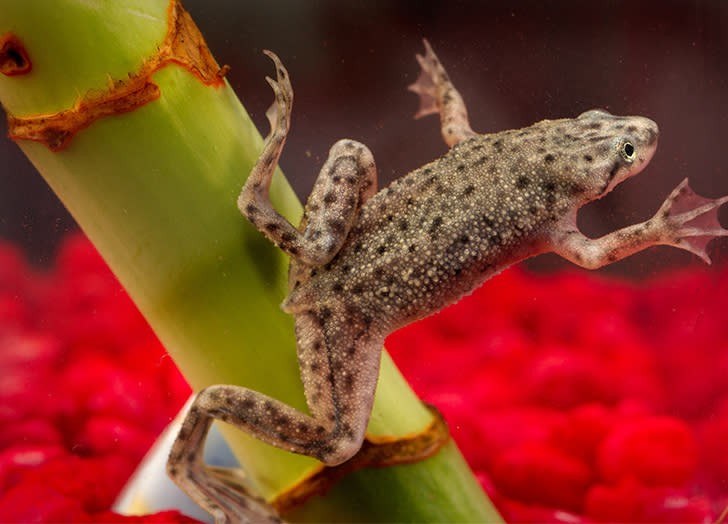
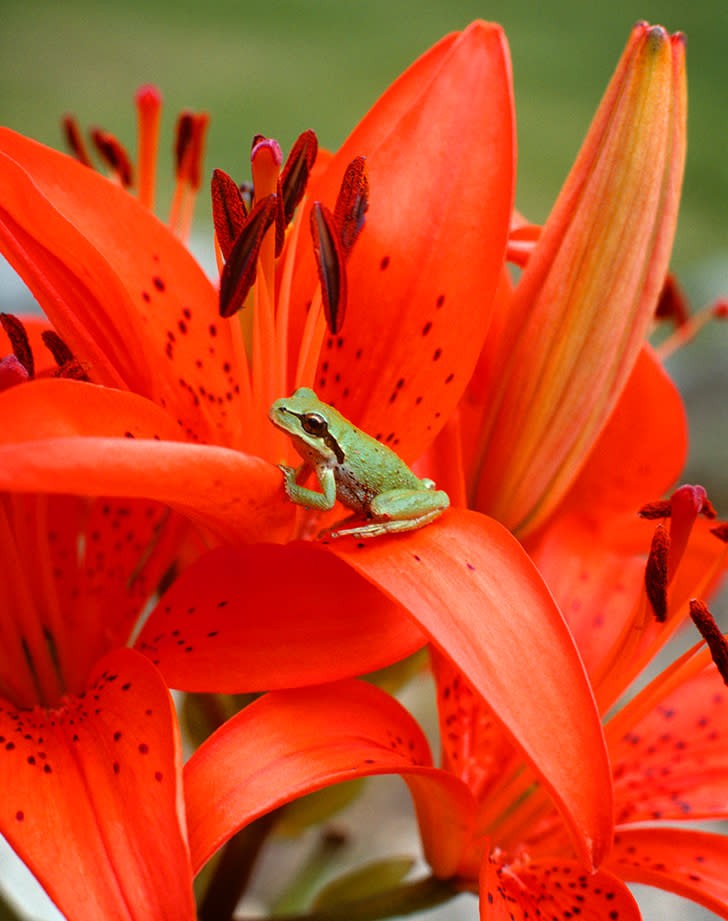
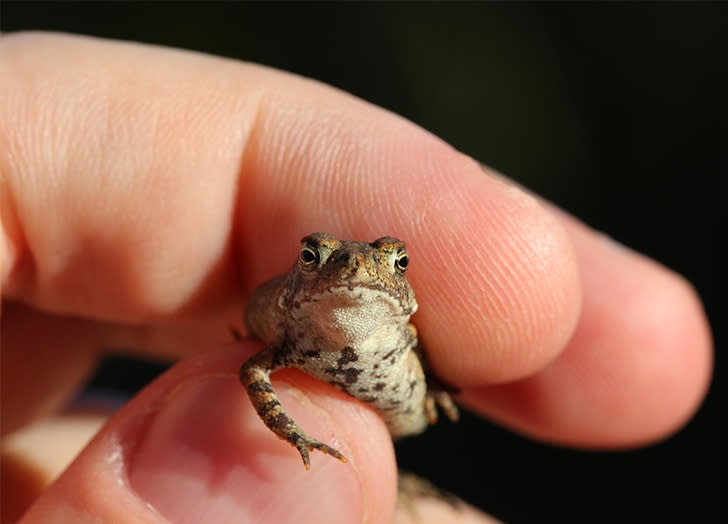
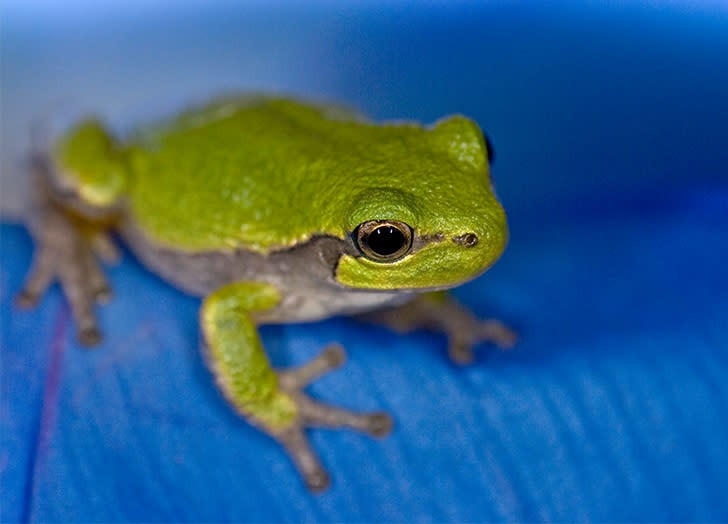
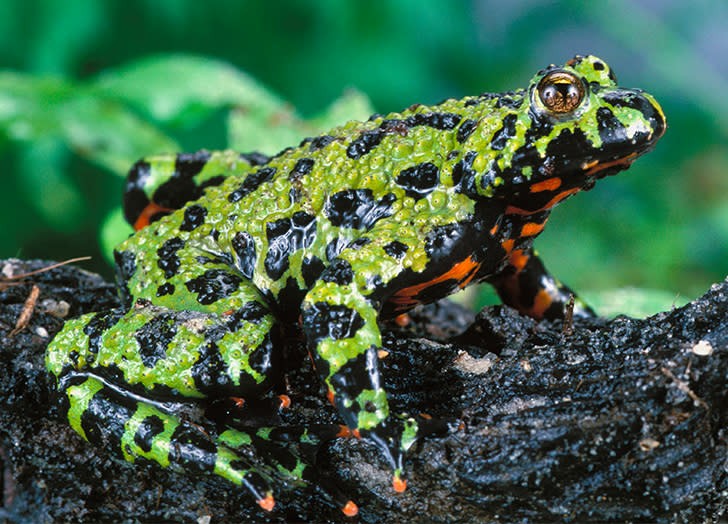
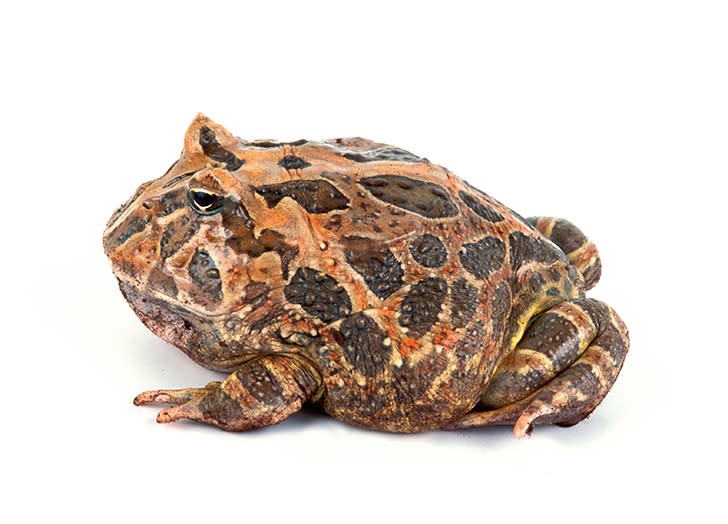
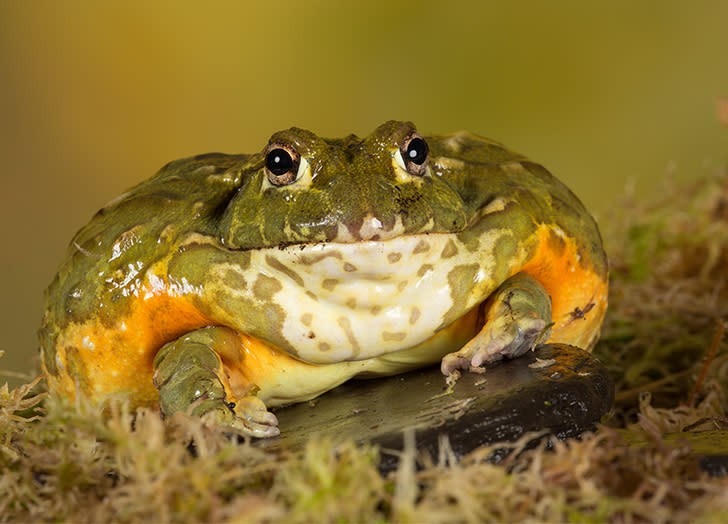
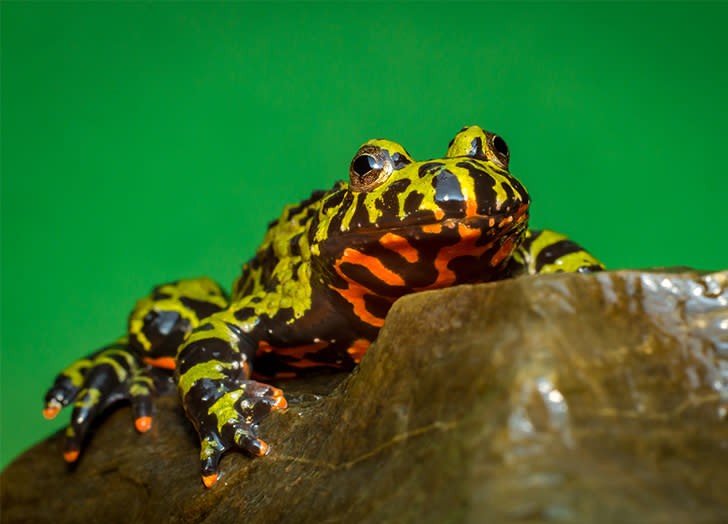
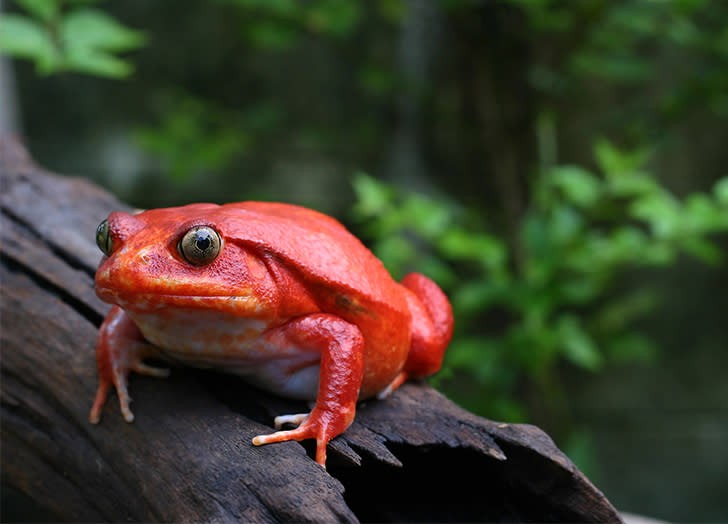
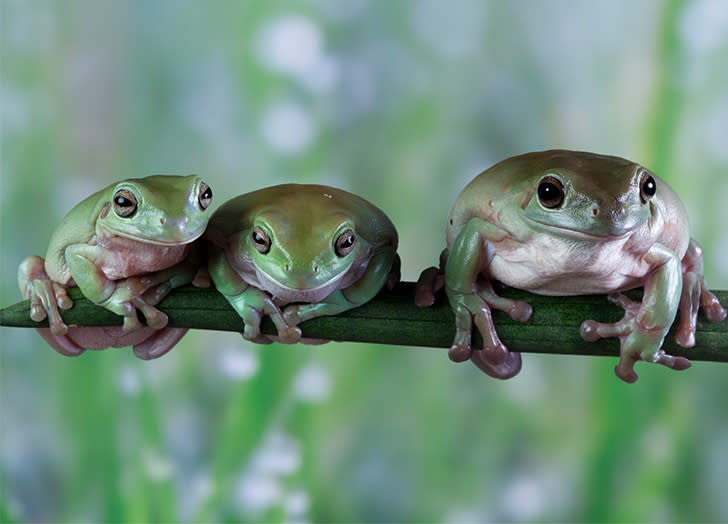
1.2. Considerations Before Acquiring a Pet Frog
Before bringing a frog home, several factors should be considered. Most frogs are nocturnal, meaning they are most active at night. They are not cuddly pets and generally dislike being handled, making them ideal for individuals who appreciate observing rather than interacting physically.
1.3. Ethical Sourcing: Why Not Wild Frogs?
Taking frogs from the wild is discouraged due to potential harm to local ecosystems and the risk of the frog carrying diseases. Instead, opt for reputable breeders who can provide healthy, captive-bred frogs. Look for breeders who are members of organizations like the United States Association of Reptile Keepers to ensure ethical practices.
2. Popular Frog Species for Pet Owners
Choosing the right frog species is crucial for a successful pet ownership experience. Here are ten popular species suitable for beginners, each with unique characteristics and care requirements.
2.1. African Dwarf Frog (Hymenochirus boettgeri)
These fully aquatic frogs are small and peaceful, making them suitable for community aquariums. They require a 10-gallon tank with a secure lid, a temperature between 72-80°F, and a diet of frog pellets, fish food, and worms. Regular temperature and water quality checks are essential.
2.2. American Green Tree Frog (Hyla cinerea)
Native to the United States, these arboreal frogs require a tall terrarium with plenty of climbing space. Maintain a temperature of 70-80°F and feed them a diet of crickets. They are visually appealing but prefer not to be handled.
2.3. American Toad (Anaxyrus americanus)
These terrestrial toads are easy to care for, requiring a 10-gallon terrarium with a shallow water dish and hiding spots. They thrive at room temperature and eat insects and toad pellets. Be cautious when handling due to the bufotoxin they secrete.
2.4. Gray Tree Frog (Hyla versicolor)
Found in the U.S. and Canada, these frogs are known for changing color to match their environment. They need a humid, 18-inch tall terrarium with temperatures between 65-80°F and a diet of insects.
2.5. Oriental Fire-Bellied Toad (Bombina orientalis)
These vibrant toads require a semi-aquatic setup with half land and half water in a 10-gallon aquarium. They need a temperature of 65-82°F, a UVB light if natural sunlight is limited, and a diet of insects. Regular water changes are necessary.
2.6. Pacman Frog (Ceratophrys ornata)
Also known as South American Horned Frogs, these frogs are larger and enjoy burrowing. They require a 10-gallon terrarium with a deep substrate, a temperature of 75-85°F, and a diet of insects. They are nocturnal and come in various colors.
2.7. Pixie Frog (Pyxicephalus adspersus)
These large frogs from southern Africa spend much of their time burrowed. They need a 20-gallon aquarium, a temperature of 75°F, and a diet of large insects and small rodents. Regular feeding and hydration prevent them from entering torpor.
2.8. South American Red-Belly Toad (Melanophryniscus moreirae)
Also known as Bumble Bee Toads, these small toads are easy to care for, requiring a 5-gallon terrarium with hiding spots and a shallow water dish. They need a temperature of 70-75°F and a diet of small insects like fruit flies and pinhead crickets.
2.9. Tomato Frog (Dyscophus antongilii)
Native to Madagascar, these frogs are nocturnal and require a 10-20 gallon terrarium with plenty of burrowing space. They need a temperature of 65-85°F and a diet of insects. Handling should be avoided due to their toxin secretion.
2.10. White’s Tree Frog (Litoria caerulea)
These frogs are known for their docile nature, making them suitable for handling. They need a 15-gallon terrarium with climbing structures, a temperature of 75-85°F, and a diet of insects. They also require a shallow bowl of water.
3. Essential Care Tips for Pet Frogs and Toads
Proper care is essential for the health and longevity of your pet frog. Here are key aspects to consider:
3.1. Habitat Setup: Creating the Ideal Environment
Setting up the right habitat is the most significant investment in frog care. Each species has specific requirements for temperature, humidity, and space. Terrestrial frogs are often easier for beginners due to simpler habitat needs.
| Species | Habitat Type | Tank Size (Minimum) | Temperature (°F) | Humidity | Substrate |
|---|---|---|---|---|---|
| African Dwarf Frog | Aquatic | 10 gallons | 72-80 | High | Aquarium gravel or sand |
| American Green Tree Frog | Arboreal | Tall Terrarium | 70-80 | High | Coco fiber, moss |
| American Toad | Terrestrial | 10 gallons | Room Temperature | Moderate | Soil, leaf litter |
| Gray Tree Frog | Arboreal | 18″ Tall Terrarium | 65-80 | High | Coco fiber, moss |
| Oriental Fire-Bellied Toad | Semi-Aquatic | 10 gallons | 65-82 | High | Water and land mix |
| Pacman Frog | Terrestrial | 10 gallons | 75-85 | High | Coco fiber, moss |
| Pixie Frog | Terrestrial/Semi-Aquatic | 20 gallons | 75 | High | Coco fiber, soil |
| South American Red-Belly Toad | Terrestrial | 5 gallons | 70-75 | Moderate | Coco fiber, leaf litter |
| Tomato Frog | Terrestrial | 10-20 gallons | 65-85 | Moderate | Coco fiber, soil |
| White’s Tree Frog | Arboreal | 15 gallons | 75-85 | Moderate | Coco fiber, moss, branches |
3.2. Regular Cleaning and Maintenance
Regular cleaning is vital to prevent the buildup of harmful bacteria. Deep clean terrariums and aquariums every two to four weeks, adjusting frequency based on the number of frogs and species. Aquatic frogs require more frequent water changes.
3.3. Water Quality: Choosing the Right Water
Frogs are highly sensitive to chemicals in tap water. Use a frog-friendly water conditioner like ReptiSafe to remove chlorine and ensure neutral pH levels. Water filters are also a viable option.
3.4. Substrate: Creating a Natural Ground
The substrate at the bottom of the habitat acts as natural ground. Avoid using pebbles that can be ingested. Coco-husk fiber and moss are popular choices. Live plants can be added, but they often require more maintenance and may be damaged by burrowing frogs. Fake plants are a practical alternative.
3.5. Lighting and Temperature Control
Amphibians cannot regulate their body temperature, so providing appropriate lighting and heating is crucial. Use heat pads or special lighting to maintain the required temperature range for your specific species. A thermometer is essential to monitor the habitat’s temperature. Lighting also helps establish a day and night cycle.
3.6. Diet and Nutrition: What Do Frogs Eat?
Frogs primarily eat insects, and their diet should be supplemented to ensure they receive all necessary nutrients. Common food items include crickets, mealworms, flies, and grubs. Larger frogs may also eat small rodents. Supplement insects with a nutrient powder to provide essential vitamins and minerals.
4. Interacting with Your Pet Frog
While frogs are not cuddly pets, some species tolerate handling. Here are some guidelines:
4.1. Can You Cuddle a Frog?
Most frogs do not enjoy being handled and can become stressed. However, species like White’s Tree Frogs are more tolerant. Always handle frogs gently and only when necessary.
4.2. Safe Handling Practices
Always wash your hands thoroughly before and after handling a frog to prevent the transfer of harmful substances. Wearing gloves is recommended. Nudge the frog onto a flat palm rather than grabbing it.
4.3. Potential Health Risks
Frogs and toads can carry toxins and salmonella, so proper hygiene is crucial. Avoid touching your eyes or mouth after handling a frog, and always supervise children.
5. Understanding the Costs of Owning a Pet Frog
Owning a pet frog involves several costs, both initial and ongoing. Understanding these expenses can help you prepare financially for the commitment.
5.1. Initial Setup Costs
The initial setup costs include the terrarium or aquarium, substrate, lighting, heating, water conditioner, decorations, and the frog itself.
| Item | Estimated Cost |
|---|---|
| Terrarium/Aquarium | $50 – $200 |
| Substrate | $10 – $30 |
| Lighting and Heating | $20 – $50 |
| Water Conditioner | $5 – $15 |
| Decorations/Hiding Spots | $15 – $40 |
| Frog Purchase | $5 – $100+ |
| Total | $105 – $435+ |
5.2. Ongoing Expenses
Ongoing expenses include food, supplements, replacement bulbs, and potential veterinary care.
| Item | Estimated Monthly Cost |
|---|---|
| Food (Insects) | $10 – $30 |
| Supplements | $5 – $10 |
| Replacement Bulbs | $5 – $15 |
| Veterinary Care | Varies |
| Total | $20 – $55+ |
5.3. Veterinary Care for Frogs
Finding a veterinarian experienced with amphibians is essential for addressing potential health issues. Regular check-ups can help detect and prevent common frog ailments. Common health issues include bacterial and fungal infections, parasites, and nutritional deficiencies. The Association of Reptilian and Amphibian Veterinarians (ARAV) is a valuable resource for finding qualified vets.
6. Common Health Issues in Pet Frogs
Being aware of common health issues in pet frogs allows you to take proactive measures and seek timely veterinary care.
6.1. Bacterial and Fungal Infections
Frogs are susceptible to bacterial and fungal infections due to their permeable skin. Symptoms include skin lesions, lethargy, and loss of appetite. Maintaining a clean habitat and proper water quality can prevent these infections.
6.2. Parasites
Internal and external parasites can affect frogs. Symptoms include weight loss, diarrhea, and skin irritation. Regular fecal exams and veterinary care are essential for diagnosis and treatment.
6.3. Nutritional Deficiencies
Nutritional deficiencies can occur if a frog’s diet is not properly supplemented. Vitamin A deficiency, for example, can lead to eye problems and skin issues. Providing a varied diet and using appropriate supplements can prevent these issues.
6.4. Red Leg Syndrome
Red Leg Syndrome is a bacterial infection causing redness on the frog’s legs and abdomen. It’s often associated with poor husbandry and can be fatal if untreated. Prompt veterinary care is essential.
7. Creating an Enriching Habitat for Your Frog
An enriching habitat promotes your frog’s physical and psychological well-being. Incorporate elements that mimic their natural environment.
7.1. Hiding Spots
Provide plenty of hiding spots using rocks, logs, and plants. Hiding spots reduce stress and allow frogs to feel secure.
7.2. Climbing Structures
For arboreal species, include branches and vines for climbing. Ensure the structures are safe and sturdy to prevent injuries.
7.3. Water Features
Aquatic and semi-aquatic frogs benefit from water features like shallow dishes or small ponds. Clean the water regularly to maintain hygiene.
7.4. Live Plants
While requiring more maintenance, live plants can enhance the habitat and provide natural enrichment. Choose plants that are non-toxic to frogs.
8. Responsible Pet Ownership: Long-Term Commitment
Owning a pet frog is a long-term commitment. Some species can live for many years, requiring consistent care and attention.
8.1. Legal Considerations
Check local regulations regarding exotic pet ownership. Some areas may have restrictions on certain species or require permits.
8.2. Finding a Frog Sitter
When traveling, arrange for a reliable frog sitter who can maintain the habitat and provide proper care. Provide detailed instructions and contact information for your veterinarian.
8.3. Rehoming Considerations
If you can no longer care for your frog, find a suitable new home. Contact local reptile rescues or amphibian societies for assistance. Never release a pet frog into the wild.
9. Dispelling Common Myths About Pet Frogs
There are several misconceptions about keeping frogs as pets. Let’s address some common myths:
9.1. Myth: Frogs are Low-Maintenance Pets
While some species are easier to care for than others, all frogs require specific environmental conditions, regular feeding, and habitat maintenance.
9.2. Myth: Frogs Don’t Need Veterinary Care
Frogs are susceptible to various health issues and benefit from regular veterinary check-ups with a reptile and amphibian vet.
9.3. Myth: All Frogs Can Be Handled
Most frogs prefer not to be handled and can become stressed. Only handle frogs when necessary and always with clean hands.
9.4. Myth: Frogs Don’t Need Enrichment
Frogs benefit from an enriching habitat with hiding spots, climbing structures, and varied environments to promote their well-being.
10. Resources for Pet Frog Owners
Numerous resources are available to support pet frog owners, providing valuable information and assistance.
10.1. Websites and Forums
Websites like PETS.EDU.VN and forums dedicated to amphibian care offer a wealth of information, advice, and community support.
10.2. Books and Guides
Several books and guides provide detailed information on frog care, species-specific needs, and health management.
10.3. Local Herpetological Societies
Local herpetological societies offer educational programs, networking opportunities, and rescue services.
10.4. Veterinarians
Veterinarians experienced with amphibians are essential for addressing health issues and providing preventive care. The Association of Reptilian and Amphibian Veterinarians (ARAV) can help you find a qualified vet.
FAQ: Common Questions About Frog Ownership
1. What do frogs eat?
Frogs primarily eat insects, such as crickets, mealworms, and flies. Some larger species may also eat small rodents. Supplement their diet with a nutrient powder to ensure they receive essential vitamins and minerals.
2. How often do I need to clean a frog’s habitat?
Deep clean terrariums and aquariums every two to four weeks, adjusting frequency based on the number of frogs and species. Aquatic frogs require more frequent water changes.
3. Can I use tap water for my frog’s habitat?
No, tap water contains chemicals that can harm frogs. Use a frog-friendly water conditioner like ReptiSafe to remove chlorine and ensure neutral pH levels.
4. What temperature should I maintain in my frog’s habitat?
The ideal temperature depends on the species. Research the specific needs of your frog and use heat pads or special lighting to maintain the required temperature range.
5. Do frogs need light in their habitat?
Yes, lighting helps establish a day and night cycle, which is essential for frogs’ well-being. Use appropriate lighting to mimic natural conditions.
6. Can I handle my pet frog?
Most frogs prefer not to be handled, but some species, like White’s Tree Frogs, are more tolerant. Always handle frogs gently and only when necessary, with clean hands.
7. Are frogs good pets for children?
Frogs can be good pets for children who are responsible and understand the need for gentle care and observation rather than constant handling. Always supervise children when they interact with frogs.
8. How long do pet frogs live?
The lifespan of pet frogs varies by species. Some species live for only a few years, while others can live for over a decade with proper care.
9. Where can I buy a pet frog?
Buy pet frogs from reputable breeders or pet stores that specialize in reptiles and amphibians. Avoid taking frogs from the wild.
10. What are some signs of illness in frogs?
Signs of illness in frogs include lethargy, loss of appetite, skin lesions, and weight loss. If you notice any of these symptoms, consult a veterinarian experienced with amphibians.
Conclusion: Is a Frog the Right Pet for You?
Deciding whether to have a frog as a pet involves careful consideration of their unique needs and your ability to provide proper care. Frogs can be fascinating and rewarding pets for those who appreciate observing these amphibians in a well-maintained habitat. At PETS.EDU.VN, we are committed to providing you with the information and resources you need to make an informed decision and ensure the health and happiness of your pet frog.
Call to Action
Ready to explore the world of pet frogs? Visit PETS.EDU.VN for more in-depth guides, expert advice, and resources to help you provide the best possible care for your amphibian companion. Whether you’re a beginner or an experienced reptile enthusiast, our comprehensive resources will help you create a thriving habitat and enjoy the unique experience of owning a pet frog. For any questions or more information, contact us at 789 Paw Lane, Petville, CA 91234, United States, Whatsapp: +1 555-987-6543, or visit our website: pets.edu.vn.